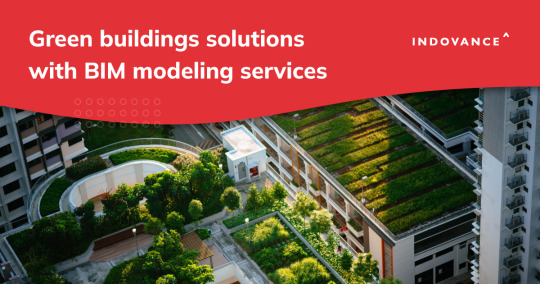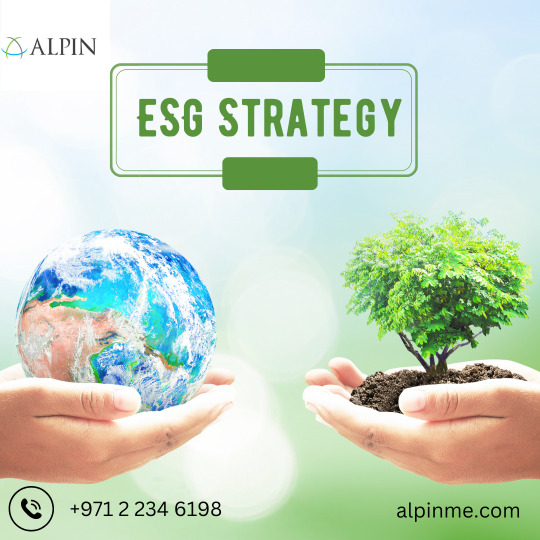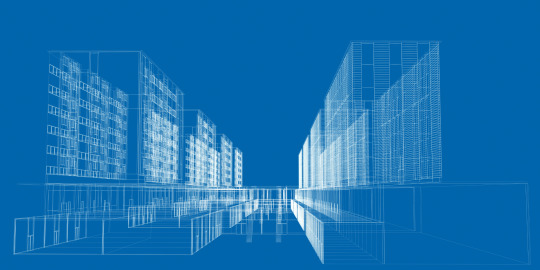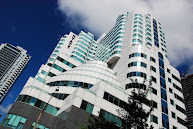#LEED certificate
Text
Green Buildings Solutions with BIM Modeling Services

Green Buildings or Green Architecture can preserve or raise the standard of living in the area in which it is situated thanks to their design and features. Achieving a high level of efficiency is necessary to accomplish because it minimizes pollution by using less energy, water, and other resources.
Building Information Modeling (BIM) is a 3D model-based process for planning, designing, and constructing buildings that can help in planning an eco-friendly structure.
Building Information Modelling (BIM) can be used to reduce energy consumption and the environmental impact of a building. BIM provides specific workflows and modeling tips to make a building a ‘Green Building’.
Learn here how can BIM modeling services help green building design.
0 notes
Text
you can't convince me that tony didn't give ned a stark internship too
#lotus speaks#he gets his certificate too!#i might draw this one day.#but anyway appreciate ned leeds
11 notes
·
View notes
Text
LEED Green Certification
Reteal offers a robust LEED Green certification program, focusing on sustainable building practices and environmental stewardship. Our course provides in-depth knowledge of LEED standards, energy efficiency, and eco-friendly design. With expert instruction and flexible online learning, Reteal helps you achieve LEED Green certification and advance your career in sustainability.

0 notes
Text
Sustainable Site Development: Building for the Future
Sustainable internet website online on line development is a important trouble of green constructing practices, specializing inside the utilization of land in a way that minimizes environmental effect, reduces resource intake, and enhances the nicely-being of occupants. This approach to internet site improvement targets to stability human dreams with the natural surroundings, developing areas which can be every purposeful and sustainable.
Key Principles of Sustainable Site Development
Sustainable web page development starts offevolved with a whole knowledge of the internet net page's natural features and capability influences. Key requirements include minimizing site disturbance, preserving herbal plants, and coping with stormwater runoff to prevent soil erosion and water pollutants. Proper internet web page choice is likewise important, thinking about elements like proximity to public transportation, present infrastructure, and capability risks from natural failures.
Another critical aspect is integrating inexperienced infrastructure, together with permeable pavements, inexperienced roofs, and rain gardens, to control stormwater and decrease the warm temperature island effect. Sustainable net web sites are designed to guide biodiversity with the aid of incorporating local vegetation and growing habitats for nearby vegetation and fauna.
Benefits of Sustainable Site Development
The advantages of sustainable website improvement are severa. By retaining herbal landscapes and minimizing the disruption of ecosystems, we're able to keep biodiversity and natural water cycles, decreasing the need for artificial irrigation and water manage systems. Sustainable internet site on line practices additionally enhance air and water fantastic, enhance community health, and make a contribution to resilience in opposition to weather alternate.
Moreover, sustainable net site development can result in huge rate economic financial savings over the lifestyles of a building. Efficient use of land and property reduces advent charges, at the same time as herbal stormwater manipulate systems decrease the want for steeply-priced infrastructure.
Different sustainable site development examples can help create responsible online platforms.
Think of using absorbent paving materials. This lets rainwater seep into the soil, cuts down on runoff, and replenishes groundwater sources. Consider green roofs.They insulate buildings, chop down on energy use, and support local ecosystems. Including rain gardens can help filter out harmful stuff from stormwater before it gets to nearby bodies of water.
Other techniques embody the usage of reflective substances for paving and roofing to reduce the metropolis warmth island impact and designing landscapes that require minimum irrigation via using nearby and drought-tolerant flowers.
LEED AP Green Associate Takeaway
For folks aiming for LEED (Leadership in Energy and Environmental Design) accreditation, eco-friendly site growth connects with numerous LEED points, like the "Sustainable Sites" and "Location and Transportation." As a LEED AP Green Associate, grasping these values is key to steer projects towards achieving eco objectives and gaining LEED certification points.
Conclusion
Sustainable net internet site improvement isn't always pretty much minimizing damage to the environment; it’s about developing areas which can be resilient, purposeful, and supportive of human and ecological fitness. By integrating sustainable practices into internet site planning and design, we can assemble groups which is probably higher for human beings and the planet, paving the manner for an extra sustainable future.
0 notes
Text

Alpin has grown to encompass some of the world’s leading voices and thought leaders in the field of sustainable development and climate change, so much so that what started off as a niche advisory service has grown into a holistic service offering Sustainability Reporting that incorporates all of the elements and aspects that would play a role in creating a sustainable development or policy. The essence of our work lies in our flexibility, giving us the ability to match the very best consultants to your project’s needs, no matter the size or sector. We draw from a trusted pool of highly experienced, regionally based project managers as well as Decarbonization Strategies to create a winning team.
#carbon emissions calculations#decarbonization strategies#epd#green building certification#sustainability#Environmental Product Declarations#Sustainability Reporting#Acoustic Engineering#LEED Certification#WELL Certification#Independent Commissioning Authority#Commissioning Management#Net Zero Advisory#ESG Advisory
0 notes
Text

Take the first step towards a greener tomorrow with Susnomics. Our LEED consulting and certification services help you navigate the complexities of sustainable building practices
0 notes
Text

Looking to achieve LEED certification for your building project? Trust Termoservice Green Build, your expert partner in sustainable design and construction. Our dedicated team guides you through the entire LEED certification process, ensuring your project meets the highest environmental standards. Visit https://shorturl.at/lv7Kb today and start your journey towards a greener future!
0 notes
Text
The Importance of Sustainability Reporting in Corporate Accountability

In the current landscape of corporate governance and responsibility, sustainability reporting has emerged as a critical tool for organizations aiming to demonstrate their commitment to environmental, social, and governance (ESG) principles. This article explores the significance of sustainability reporting in enhancing corporate accountability, with a focus on integrating Net Zero Advisory, LEED Certification, WELL Certification, and Commissioning Management into comprehensive sustainability strategies.
Understanding Sustainability Reporting
Sustainability reporting refers to the practice of disclosing an organization's economic, environmental, social, and governance performance. It goes beyond financial reporting by providing stakeholders, including investors, employees, customers, and communities, with transparent insights into a company's sustainability initiatives and impacts. Sustainability reports typically cover a range of metrics, from greenhouse gas emissions and energy consumption to diversity and inclusion practices, reflecting the organization's efforts towards sustainable development.
The Role of Net Zero Advisory
Net Zero Advisory services play a pivotal role in guiding organizations towards achieving carbon neutrality or net zero emissions. These advisory services assist companies in setting ambitious emission reduction targets, implementing carbon offset strategies, and integrating renewable energy solutions into their operations. By engaging Net Zero Advisory, organizations can align their sustainability goals with global climate targets, enhance operational efficiency, and mitigate climate-related risks.
LEED Certification: Leading in Sustainable Building Design
LEED (Leadership in Energy and Environmental Design) Certification is a globally recognized standard for sustainable building design and construction. It evaluates buildings based on criteria such as energy efficiency, water conservation, indoor environmental quality, and sustainable site development. Achieving LEED Certification demonstrates a commitment to environmental stewardship, enhances building performance, and improves occupant health and productivity. Integrating LEED Certification into sustainability reporting underscores a company's dedication to sustainable development and green building practices.
WELL Certification: Prioritizing Health and Well-being
WELL Certification focuses on enhancing human health and well-being in the built environment. It evaluates buildings based on factors such as air quality, lighting, water quality, nutrition, and mental health support. WELL Certified buildings are designed to promote physical and mental wellness among occupants, thereby improving productivity and reducing absenteeism. Incorporating WELL Certification into sustainability reporting highlights a company's investment in creating healthier and more productive workplaces, aligning with broader ESG goals.
Commissioning Management: Optimizing Building Performance
Commissioning Management involves the systematic process of ensuring that building systems operate efficiently and effectively according to design intent. It encompasses planning, testing, and documenting building systems during design, construction, and occupancy phases. Effective Commissioning Management improves energy efficiency, reduces operational costs, and enhances occupant comfort and satisfaction. Including Commissioning Management in sustainability reporting demonstrates proactive management of building performance and adherence to sustainability goals.
Benefits of Comprehensive Sustainability Reporting
Enhanced Transparency and Accountability: Sustainability reporting provides stakeholders with transparent information about an organization's environmental, social, and governance practices, fostering trust and accountability.
Risk Mitigation: By identifying and addressing sustainability risks, such as regulatory changes, resource scarcity, and climate impacts, companies can mitigate operational and reputational risks.
Market Differentiation: Sustainability reporting allows companies to differentiate themselves in the marketplace by showcasing their commitment to sustainable practices and attracting environmentally conscious investors and customers.
Operational Efficiency: Implementing sustainable practices, such as energy efficiency measures and waste reduction initiatives, improves operational efficiency and reduces costs over the long term.
Stakeholder Engagement: Engaging with stakeholders through sustainability reporting enables companies to respond to stakeholder expectations, build relationships, and address concerns effectively.
Challenges and Considerations
While the benefits of sustainability reporting are clear, organizations may encounter challenges such as data management complexities, resource constraints, and evolving regulatory requirements. Addressing these challenges requires robust systems, dedicated resources, and continuous improvement in sustainability performance.
Case Studies in Sustainability Leadership
Several companies have demonstrated leadership in sustainability reporting and certification integration:
LEED Platinum Certification for its headquarters, showcasing energy efficiency and sustainable design principles in its sustainability report.
WELL Certification for its office spaces, emphasizing employee health and well-being initiatives in its sustainability disclosures.
Net Zero Advisory services to develop a roadmap towards carbon neutrality, aligning its sustainability goals with global climate targets and reporting progress transparently.
Conclusion
In conclusion, sustainability reporting plays a vital role in enhancing corporate accountability by providing stakeholders with transparent insights into an organization's ESG performance. By integrating Net Zero Advisory, LEED Certification, WELL Certification, and Commissioning Management into comprehensive sustainability strategies, companies can demonstrate leadership in environmental stewardship, social responsibility, and governance practices. As businesses continue to prioritize sustainability as a core business strategy, those that embrace comprehensive sustainability reporting will not only meet stakeholder expectations but also drive innovation, resilience, and long-term value creation.
0 notes
Text
0 notes
Text
Green Building Certification In UAE | LEED Certifications In UAE, KSA
Green Building Certification and LEED Certifications in UAE, KSA that helps contractors and developers to adopt best practices for green building with their projects and companies.

0 notes
Text
Leed Certification Provider - PEC Greening India
For LEED certification, is a consultant necessary? PEC Greening India is one of the top destinations in Mumbai to get a LEED certification. Our highly skilled personnel will be happy to help you with your tasks. The website pecgreeningindia.com has further details.
0 notes
Text
LEED courses in Dubai
Reteal provides specialized LEED courses in Dubai, designed for professionals seeking to excel in sustainable building practices. Our courses cover key LEED concepts, energy efficiency, and green building strategies. With expert instructors and flexible learning options, Reteal equips you with the skills needed to achieve LEED certification and lead in sustainability.
https://www.penname.me/@reteal_kelley
0 notes
Link
#sustainable real estate investment#green real estate#eco-friendly properties#energy-efficient buildings#green certifications#environmental consciousness#sustainable development#green building design#leed certification#breeam certification#Renewable energy in real estate#sustainable architecture#Eco-conscious tenants#Market trends in sustainability#Future-proofing portfolios#Sustainable construction#Passive solar design#green roofs#rainwater harvesting systems#resource efficiency#carbon footprint reduction#environmental regulations#Market demand for sustainability#Financial returns on green investments#Long-term sustainability goals#Sustainable property management#Environmental impact mitigation#Green living spaces#Climate-friendly real estate
0 notes
Text
Sustainability is no longer a buzzword but a prerequisite in the contemporary built environment. Central to this green revolution is the LEED (Leadership in Energy and Environmental Design) certification, a globally recognized symbol of sustainability achievement and leadership. However, the journey to LEED certification is often misunderstood as a costly one. This comprehensive guide aims to demystify the costs associated with LEED certification requirements and provide practical strategies for achieving it affordably.
0 notes
Text
Leveraging BIM for the Construction of LEED Platinum Buildings

Introduction
In the realm of sustainable architecture and construction, the Leadership in Energy and Environmental Design (LEED) certification stands as a beacon of excellence. The prestigious LEED Platinum certification signifies the highest environmental performance and sustainability level. However, the journey towards constructing a LEED Platinum building is not without its challenges. It requires meticulous planning, innovative design, and advanced technologies. One such technology that has revolutionized the construction industry is Building Information Modeling (BIM). In this article, we delve into how BIM plays a pivotal role in creating LEED Platinum buildings.
Understanding LEED Platinum Certification
Before diving into the role of BIM, it's essential to grasp the significance of LEED Platinum certification. LEED, developed by the U.S. Green Building Council (USGBC), is a globally recognized green building rating system. It evaluates buildings based on criteria such as energy efficiency, water conservation, materials selection, indoor environmental quality, and sustainable site development. Platinum is the highest level of LEED certification, indicating exceptional performance across all categories.
The Evolution of BIM
Building Information Modeling (BIM) has transformed the architecture, engineering, and construction (AEC) industry by digitizing the entire building process. BIM involves creating a digital representation of the physical and functional characteristics of a building. Unlike traditional 2D drawings, BIM encompasses 3D models augmented with data that stakeholders can use throughout the project lifecycle, from design and construction to operation and maintenance.
Integration of BIM and Sustainable Design
The synergy between BIM and sustainable design principles is evident in the construction of LEED Platinum buildings. BIM facilitates a holistic approach to sustainable design by enabling architects, engineers, and contractors to collaborate seamlessly. Here's how BIM contributes to different aspects of sustainable construction:
1. Energy Efficiency: BIM allows for detailed energy analysis early in the design phase. By simulating various design scenarios, stakeholders can identify the most energy-efficient solutions, such as optimal building orientation, daylighting strategies, and HVAC system selection. This proactive approach to energy modeling helps minimize energy consumption and greenhouse gas emissions, aligning with LEED's energy performance requirements.
2. Material Selection: BIM's database capabilities streamline the selection of sustainable materials. Design teams can access libraries containing information on materials' environmental impact, such as recycled content, embodied carbon, and certifications (e.g., Forest Stewardship Council for wood products). By making informed choices, projects can earn LEED credits for sustainable material usage.
3. Water Conservation: BIM facilitates the design of water-efficient systems, such as rainwater harvesting, greywater recycling, and low-flow fixtures. Through hydraulic modeling, designers can optimize plumbing layouts to minimize water usage and ensure efficient distribution. These strategies contribute to achieving LEED credits for water efficiency and innovation in water management.
4. Site Optimization: BIM's site analysis tools aid in site selection and planning. By evaluating factors like solar exposure, wind patterns, and topography, designers can optimize site layouts to maximize passive design strategies and minimize environmental impact. This holistic approach to site planning aligns with LEED's prerequisites for sustainable site development and credits for site selection and land use.
Collaborative Workflows with BIM
Another key aspect of BIM's contribution to LEED Platinum construction is its ability to foster collaboration among project stakeholders. BIM platforms serve as centralized repositories for project information, allowing architects, engineers, contractors, and owners to collaborate in real time. Through integrated design and construction workflows, teams can:
Coordinate Design Changes: BIM enables interdisciplinary coordination by detecting clashes and conflicts early in the design process. This proactive clash detection minimizes rework and ensures that sustainable design features are seamlessly integrated.
Facilitate Communication: BIM fosters transparent communication through shared models and data exchange protocols. Stakeholders can visualize design intent, track project progress, and communicate design decisions effectively, fostering a collaborative environment conducive to sustainability.
Optimize Construction Sequencing: BIM's 4D (time) and 5D (cost) capabilities enhance construction planning and scheduling. By visualizing construction sequences and simulating project phasing, teams can optimize resource allocation, minimize waste, and adhere to LEED's requirements for sustainable construction practices.
Lifecycle Benefits of BIM for LEED Buildings
Beyond the construction phase, BIM offers long-term benefits for LEED Platinum buildings throughout their lifecycle:
Facility Management: BIM serves as a digital twin for facility management, providing owners with comprehensive as-built information. Maintenance teams can access detailed documentation, maintenance schedules, and equipment specifications, facilitating efficient operations and maximizing building performance.
Performance Monitoring: BIM-integrated building management systems enable real-time performance monitoring. By collecting data on energy usage, indoor air quality, and occupant comfort, owners can identify opportunities for optimization and continuously improve building performance, maintaining LEED's stringent sustainability standards.
Adaptability and Resilience: BIM supports building adaptation and resilience in the face of changing environmental conditions. Through parametric modeling and scenario analysis, owners can explore retrofit options, implement resilience measures, and future-proof their buildings against climate change impacts, ensuring the longevity of LEED Platinum certification.
Conclusion
In conclusion, Building Information Modeling (BIM) plays a pivotal role in the construction of LEED Platinum buildings by enabling sustainable design, fostering collaboration, and supporting lifecycle benefits. Through integrated workflows and advanced analytical capabilities, BIM empowers project teams to achieve exceptional levels of environmental performance and sustainability. As the AEC industry continues to embrace sustainable design practices, BIM will remain a cornerstone technology in the quest to create healthier, more efficient, and environmentally responsible built environments.
ProtoTech Solutions is a trusted provider of BIM Modeling Services in the USA, boasting two decades of unparalleled expertise in BIM technology. Specializing in advanced Building Information Modeling, their skilled team delivers precise solutions tailored to diverse project requirements. With a commitment to excellence, ProtoTech ensures streamlined processes, enhanced collaboration, and optimal project outcomes, setting a benchmark in the industry.
#LEED Platinum Building Design#BIM#Sustainability#LEED Platinum building#LEED Platinum Certification#3D models#Sustainable Design#Energy Efficiency
0 notes
Text
hyatt
sustainability





CUT WATER AND GHG EXHAUSTIONS 2014 goals were declared: By the end of 2020, each region should have reduced its water consumption per guest night and greenhouse gas (GHG) emissions per square meter by 25% from 2006 levels. Our goal is to cut water use each visitor night in water-stressed areas by thirty percent. DIVERT WASTE Objective declared in 2014: By 2020, all hotels under management will have diverted more than 40% of their waste from landfills. meal waste control plans, such as smaller displays and à la carte meal preparation for buffets, are being developed by full-service hotels as part of an ongoing focus on this issue. Over 190,000 pounds of extra edible food were donated to nearby nonprofits. Approximately 7,000 tons of food waste were composted as opposed to being dumped in landfills.
BUY CONSCIENTIOUSLY
Objectives declared in 2014: By the end of 2018, select at least eight purchase categories with more environmentally friendly options. Food. Carefully Sourced.
With Care Served. In restaurants, banquet spaces, and function areas of Grand Hyatt, Hyatt Regency, Destination Hotels, Hyatt, Hyatt Centric, Hyatt Place, and Hyatt House hotels in the United States and Canada, a new coffee utilizing beans from Rainforest Alliance Certified TM farms was introduced.
Construct a smart
Work together to design, construct, and refurbish hotels that are more impact-free and efficient with owners and developers.LEED certification has been obtained by 54 franchised and managed properties.Building on its former Gold accreditation, Alla Villas Uluwatu attained EarthCheck Platinum, a significant achievement for the Alila hotels' EarthCheck priority.
1 note
·
View note